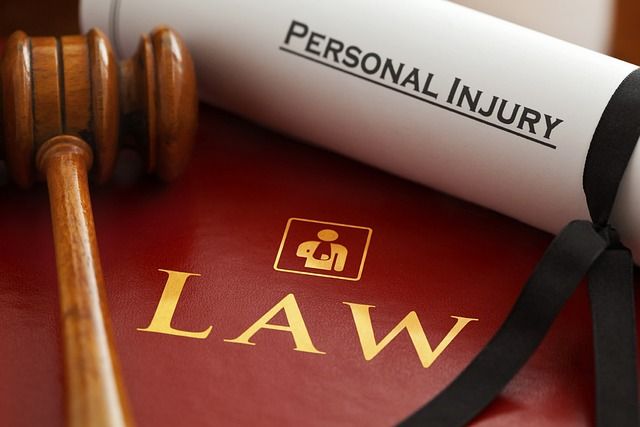Bouncing Back: The Ultimate Guide to Recovering After an Injury
- Category: Pics |
- 26 Jul, 2024 |
- Views: 558 |

Injuries, whether they are the result of an accident, sports, or a chronic condition, can significantly disrupt your life. The road to recovery often feels daunting, filled with uncertainty and challenges.
However, with a structured approach, you can navigate this period more effectively and emerge stronger.
Understanding and managing your recovery process from an injury not only aids in healing but also empowers you to regain control over your life. By following this guide, you’ll be equipped with the knowledge and tools needed to recover effectively and return to your routine with confidence.
Understanding Your Injury
Recovering from an injury begins with a clear understanding of what has happened to your body. Different types of injuries come with varying challenges and recovery timelines.
Types of Injuries
• Acute Injuries: Acute injuries occur suddenly and are usually the result of a specific event, such as a fall, collision, or strain. Examples include fractures, sprains, and concussions. These injuries often require immediate medical attention and can involve a defined recovery period. Early intervention is crucial for effective healing.
• Chronic Injuries: Chronic injuries develop over time due to repetitive stress or overuse. Common examples include tendonitis, bursitis, and stress fractures. Recovery from chronic injuries may involve a longer-term approach, including lifestyle changes and ongoing management to prevent recurrence.
How Injury Type Affects Recovery
• Severity: The severity of the injury directly impacts the duration and complexity of the recovery process. More severe injuries may require surgical intervention or extensive rehabilitation.
• Location: The location of the injury can influence the type of treatment and recovery strategies. For instance, injuries to weight-bearing joints may require specific rehabilitation exercises.
• Individual Factors: Your overall health, age, and fitness level play significant roles in recovery. Younger individuals or those in better physical condition may experience faster healing.
Immediate Steps Post-Injury
When an injury occurs, the first few moments are crucial for setting the stage for effective recovery. Taking the right actions immediately can significantly impact your healing process.
Apply the R.I.C.E. method. Rest, Ice, Compression, and Elevation can help manage pain and reduce swelling in the initial hours after an injury. If possible, keep the injured area still to prevent further damage.
Always consult a healthcare professional to assess the injury's severity and receive appropriate treatment. Adhere to prescribed treatments and medications to ensure proper healing.
Physical Recovery
Recovering physically from an injury involves a blend of rest, rehabilitation, and ongoing care. Rest is crucial in the early stages to allow your body to heal, pair this with a balanced diet rich in proteins, vitamins, and minerals to support tissue repair and overall health.
Once the initial healing phase has passed, engaging in rehabilitation exercises is vital, these exercises, guided by a physical therapist, help restore strength, flexibility, and function. Consistent therapy sessions can accelerate recovery and reduce the risk of future injuries.
Emotional and Mental Recovery
Injury recovery extends beyond physical healing to encompass emotional and mental well-being. Coping with the stress and anxiety of an injury is crucial for overall recovery.
It's normal to feel overwhelmed or anxious following an injury. Techniques such as mindfulness, meditation, and deep breathing exercises can help manage stress levels. Seeking support from mental health professionals may also be beneficial.
Surrounding yourself with a supportive network of family and friends can provide emotional comfort and encouragement. Their understanding and empathy play a crucial role in maintaining a positive outlook.
Utilizing mental health resources, including counseling or therapy, can address any psychological challenges that arise. A holistic approach to recovery that includes mental well-being ensures a more comprehensive healing process.
Reintegrating into Daily Life
Transitioning back into your daily routine after an injury requires a thoughtful approach to ensure a smooth and successful reintegration.
Start by gradually reintroducing yourself to work and regular activities. Begin with lighter tasks and progressively increase your workload as you regain strength and confidence. Communicate with your employer about any necessary adjustments to your duties or schedule.
Modify your home environment to accommodate any physical limitations. This might include installing grab bars, using assistive devices, or rearranging furniture for ease of movement.
Preventing Future Injuries
Avoiding future injuries is essential for long-term health and well-being. Implementing preventative measures can significantly reduce the risk of re-injury and promote overall safety.
Adopt practices that minimize injury risk, such as proper warm-up and cool-down routines before physical activities. Wearing appropriate protective gear and using correct techniques during exercise or sports are also crucial.
Ensure your workspace and daily activities are ergonomically friendly. Using correct posture and technique when lifting or performing repetitive tasks can help prevent strain and injury.
Maintain regular medical check-ups to monitor your health and catch any potential issues early. Embrace a healthy lifestyle, including regular exercise and a balanced diet, to support your body’s resilience and overall function.
When to Seek Legal Advice
Navigating the aftermath of an injury may sometimes involve legal considerations. Knowing when to seek legal advice can ensure you protect your rights and receive appropriate compensation.
Consider consulting a lawyer if the injury was caused by someone else's negligence, such as in car accidents or workplace incidents. Legal advice is also beneficial if you face difficulties with insurance claims or if you need to understand your rights and options.
A legal professional can help you understand the complexities of personal injury law, including potential compensation for medical expenses, lost wages, and pain and suffering. They can also guide you through the process of filing claims or pursuing legal action if necessary.
Conclusion
Recovering from an injury involves more than just physical healing; it requires a comprehensive approach that addresses both emotional and practical aspects. By following the guidelines outlined in this guide, you can navigate your recovery process more effectively and regain control of your life.
From understanding the nature of your injury to implementing strategies for physical and emotional recovery, each step is crucial in facilitating a smooth transition back to daily activities. Embrace a proactive mindset and be patient with yourself throughout the recovery journey.
By staying informed, setting realistic goals, and seeking support when needed, you can overcome the challenges of injury and emerge stronger and more resilient. Remember, a thoughtful and informed approach to recovery not only aids in healing but also empowers you to thrive beyond your injury.

